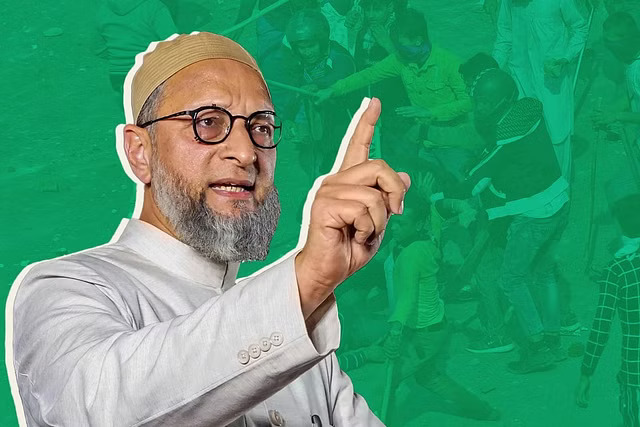During the Lok Sabha session on July 1, AIMIM MP Asaduddin Owaisi raised a poignant concern about the escalating incidents of mob lynching targeting Muslims across India. He pointedly remarked that since the declaration of Lok Sabha election results on June 4, there has been a disturbing surge in such violent episodes, resulting in the tragic deaths of six Muslims.
In tandem with Owaisi’s statement, the CPI (M) party also issued a stark declaration, highlighting a post-election spike in assaults against Muslims. Jitendra Chaudhary, a prominent leader of the party, detailed distressing accounts during a press conference. He cited instances such as the killings of five Muslims across Chhattisgarh, Uttar Pradesh, and Gujarat, alongside the destruction of eleven Muslim households in Madhya Pradesh.
Verification of Sources:
The statistics referenced by Owaisi and CPI (M) appear sourced from reputable news outlets like Maktoob Media and The Wire. Notably, Maktoob Media’s recent report preceding this discussion pointedly underscored the sixth incident of mob lynching in Gujarat following the election outcome. This report further illuminated several other poignant cases:
– In Raipur, Chhattisgarh, an attack on three Muslims on June 7 resulted in immediate fatalities for two individuals, with another succumbing to injuries ten days later.
– An appalling incident in Aligarh, Uttar Pradesh, where a Muslim was lynched.
– The tragic murder of a recently converted Christian woman in Dantewada, Chhattisgarh.
The Wire also corroborated these incidents, additionally documenting further instances of violence in states like Himachal Pradesh and Telangana.
Are these Figures Comprehensive and Balanced?
The compelling narrative presented by Owaisi and CPI (M) raises pertinent questions about the nature and extent of mob lynching incidents against Muslims in India. Can the identification of three incidents alone serve as a definitive indicator of a nationwide trend of violence against Muslims? A thorough examination of alternative news reports from this period reveals a more complex reality, where incidents of violence are not limited to any single community. For instance:
- Nuh district, Haryana, a Dalit Hindu family faced brutal assault allegedly by their Muslim neighbors, accusing them of supporting the BJP.
- In Jaunpur district, Uttar Pradesh, a Hindu individual was attacked by a group of Muslims.
- In Hardoi district, Uttar Pradesh, a Muslim mob targeted a Hindu family, resulting in fatalities and severe injuries.
- Muzaffarpur, Bihar, a Muslim group attacked a Hindu boy, causing serious injury.
- In Pratapgarh district, Uttar Pradesh, a Dalit Hindu individual was fatally attacked by a Muslim group.
- In Karnataka, two Hindu individuals were stabbed by a Muslim group.
Conclusion:
The assertions made by Asaduddin Owaisi and CPI (M) are predominantly based on selective and insufficient data regarding the rise in mob lynching incidents against Muslims. While the incidents reported by Maktoob Media and The Wire are undoubtedly tragic, they do not offer a comprehensive perspective on the multifaceted issue of communal violence in India. This selective reporting not only weakens the credibility of their claims but also undermines the imperative to address all forms of communal violence impartially.
Such selective depiction of incidents also poses the risk of exploitation by extremist elements who may manipulate narratives of victimhood to fuel communal tensions and recruit vulnerable individuals into radical ideologies.
In essence, while acknowledging the gravity of the incidents highlighted by Owaisi and CPI (M), it is crucial to recognize that communal violence affects diverse communities across India. A holistic approach to addressing these challenges requires a nuanced understanding of the underlying factors and a commitment to fostering communal harmony and justice for all affected by violence, irrespective of their religious or ethnic identities.
READ MORE: ‘Government is Taking Steps to bring Peace in Manipur’:- PM Modi
